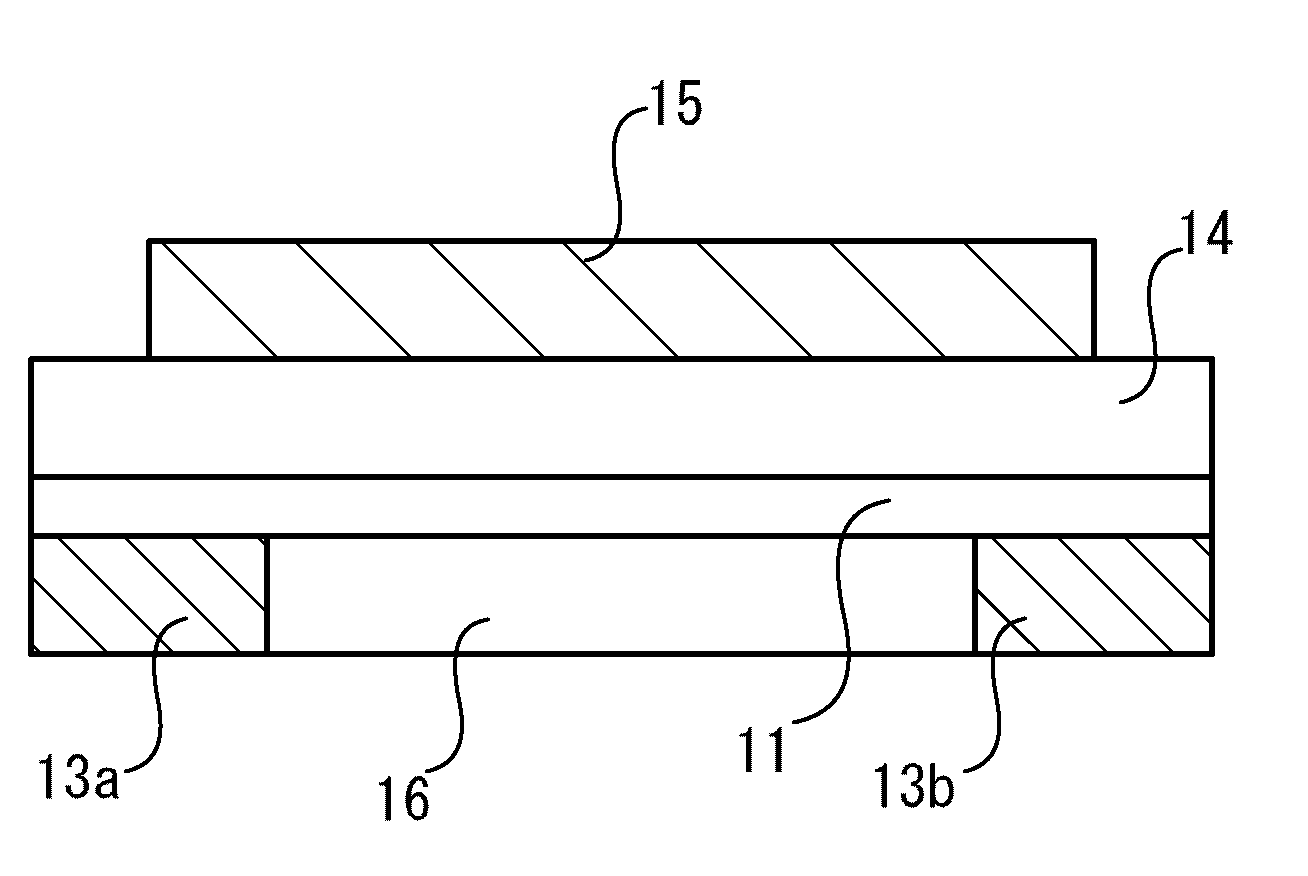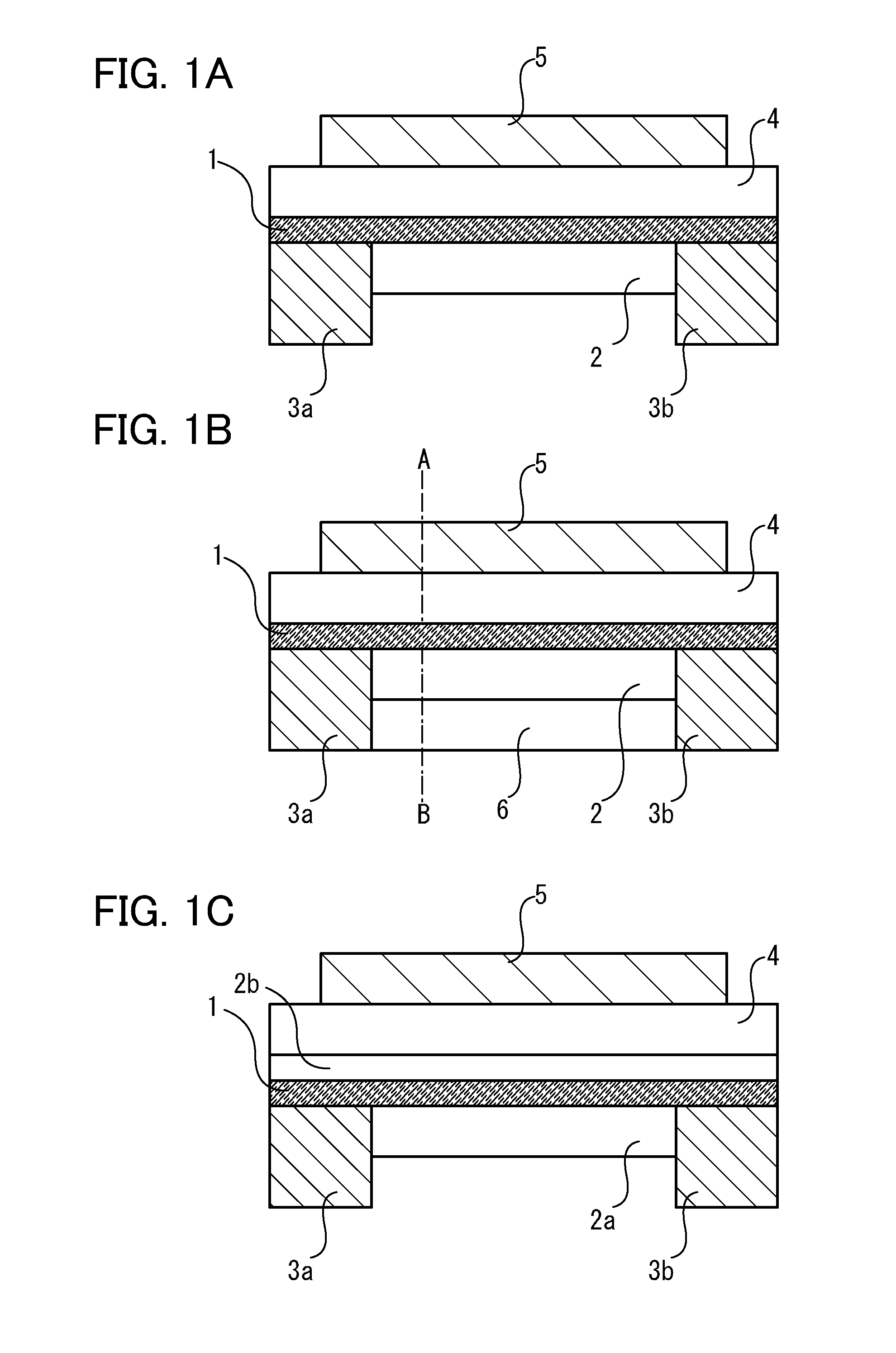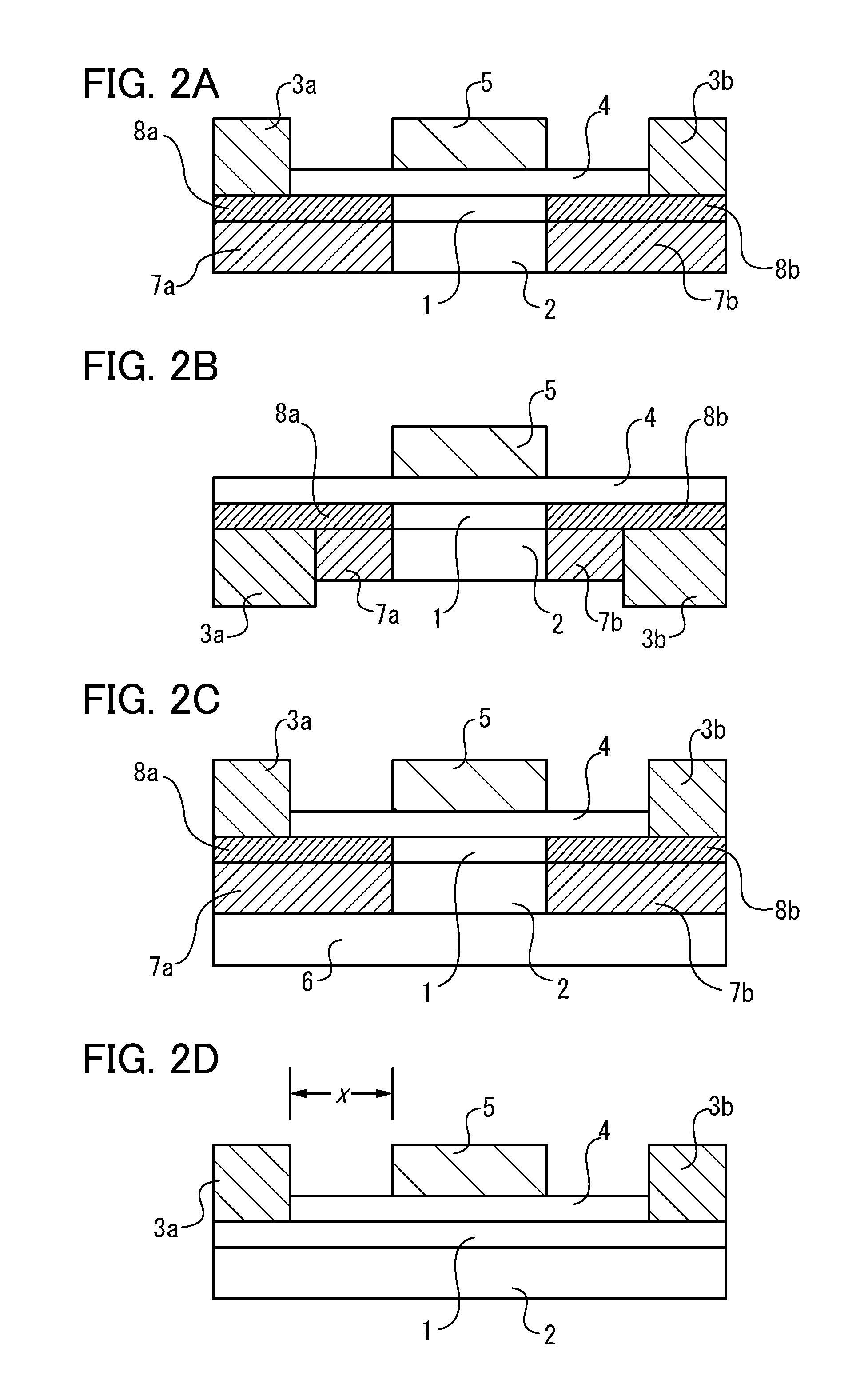Field effect transistor
- Summary
- Abstract
- Description
- Claims
- Application Information
AI Technical Summary
Benefits of technology
Problems solved by technology
Method used
Image
Examples
embodiment 1
[0077]In this embodiment, a manufacturing method of a FET will be described with reference to FIGS. 4A to 4F. First, as illustrated in FIG. 4A, a conductive layer 102 is formed over a substrate 101. A variety of substrates can be given as examples of the substrate 101, but the substrate 101 needs to have such a property as to withstand the subsequent treatment. Further, it is preferable that a surface of the substrate 101 have an insulating property. Accordingly, the substrate 101 is preferably an insulator alone; an insulator, metal, or semiconductor whose surface is provided with an insulating layer; or the like.
[0078]As the insulator, various kinds of glasses, sapphire, quartz, ceramics, plastics, or the like can be used. As the metal, aluminum, copper, stainless steel, silver, or the like can be used. As the semiconductor, silicon, germanium, silicon carbide, gallium nitride, or the like can be used. In this embodiment, barium borosilicate glass is used as the substrate 101.
[007...
embodiment 2
[0092]In this embodiment, a manufacturing method of a FET will be described with reference to FIGS. 5A to 5E. As illustrated in FIG. 5A, a conductive film 202, an insulating film 203, a first oxide semiconductor film 204, a second oxide semiconductor film 205, and an oxide insulating film 206 are stacked over a substrate 201. Formation of these films is preferably performed successively without exposure to the air on the way in order to keep interfaces of the films clean. In addition, successive film formation is also effective in order to make the hydrogen concentration in the multi-layer films lower than or equal to 1×1018 atoms / cm3, preferably lower than or equal to 1×1016 atoms / cm3.
[0093]The substrate 201, the conductive film 202, the insulating film 203, the first oxide semiconductor film 204, the second oxide semiconductor film 205, and the oxide insulating film 206 may be formed using materials, thicknesses, and formation methods that are described in Embodiment 1 as being su...
embodiment 3
[0122]In this embodiment, a manufacturing method of a FET will be described with reference to FIGS. 6A to 6D. As illustrated in FIG. 6A, an oxide insulating film 302, a second oxide semiconductor film 303, a first oxide semiconductor film 304, and an insulating film 305 are stacked over a substrate 301. Formation of theses films is preferably performed successively without exposure to the air on the way in order to keep interfaces of the films clean.
[0123]For example, a silicon wafer may be used as the substrate 301, a 200-nm-thick silicon oxide film may be used as the oxide insulating film 302, a 50-nm-thick gallium oxide film may be used as the second oxide semiconductor film 303, a 1-nm-thick indium oxide film may be used as the first oxide semiconductor film 304, and a 2-nm-thick silicon oxide film may be used as the insulating film 305. The oxide insulating film 302 may be formed by performing thermal oxidation on the substrate 301. The second oxide semiconductor film 303, the ...
PUM
 Login to View More
Login to View More Abstract
Description
Claims
Application Information
 Login to View More
Login to View More - R&D
- Intellectual Property
- Life Sciences
- Materials
- Tech Scout
- Unparalleled Data Quality
- Higher Quality Content
- 60% Fewer Hallucinations
Browse by: Latest US Patents, China's latest patents, Technical Efficacy Thesaurus, Application Domain, Technology Topic, Popular Technical Reports.
© 2025 PatSnap. All rights reserved.Legal|Privacy policy|Modern Slavery Act Transparency Statement|Sitemap|About US| Contact US: help@patsnap.com



